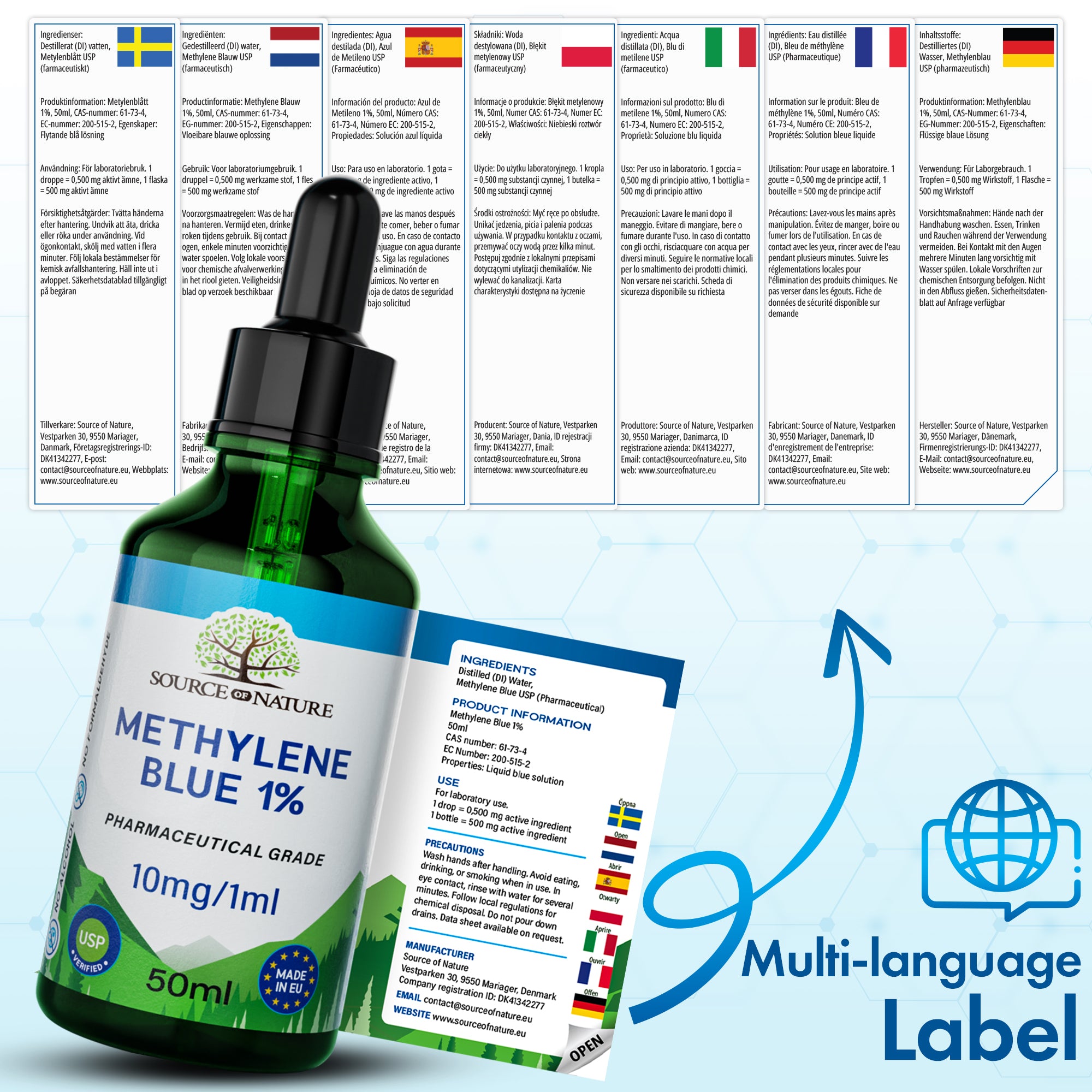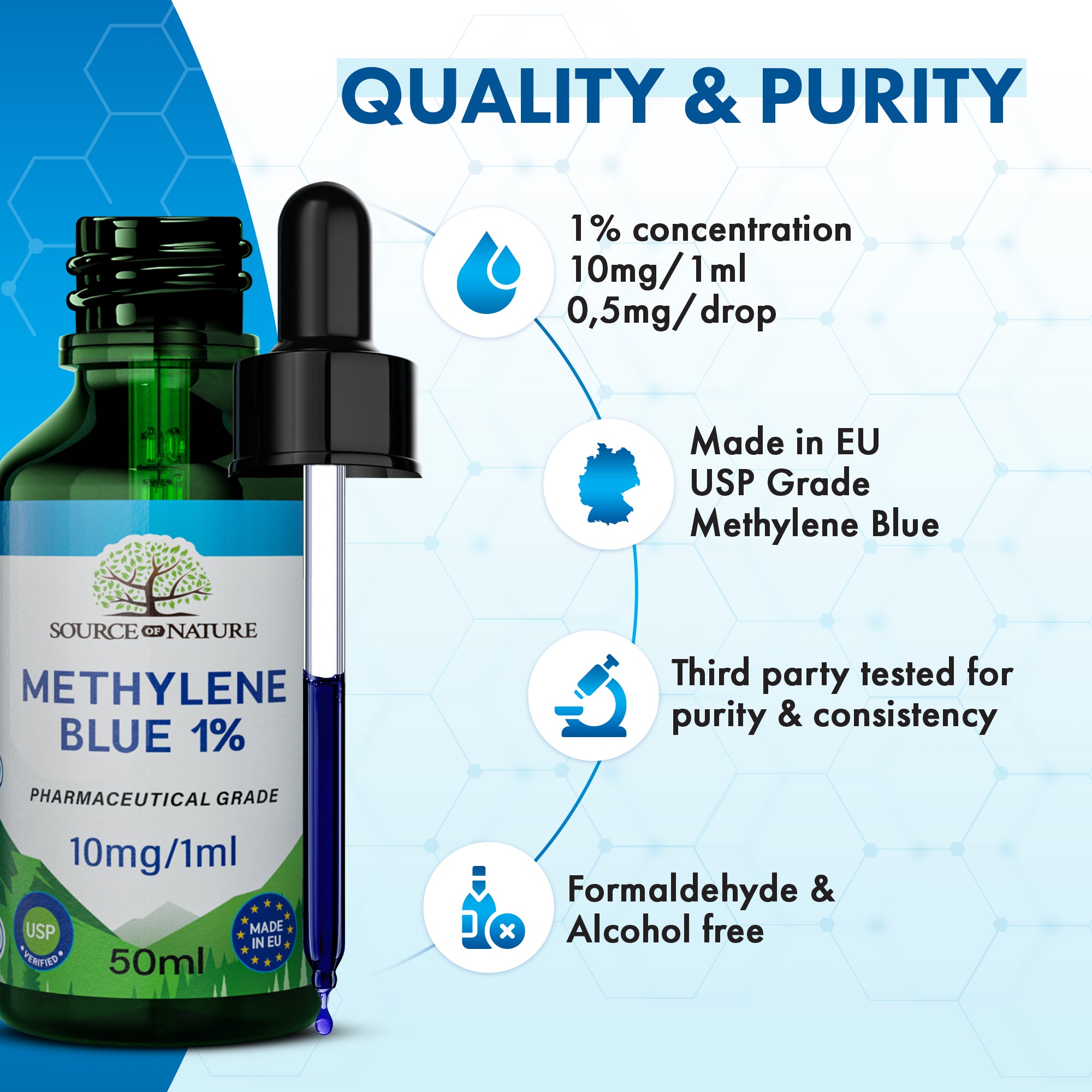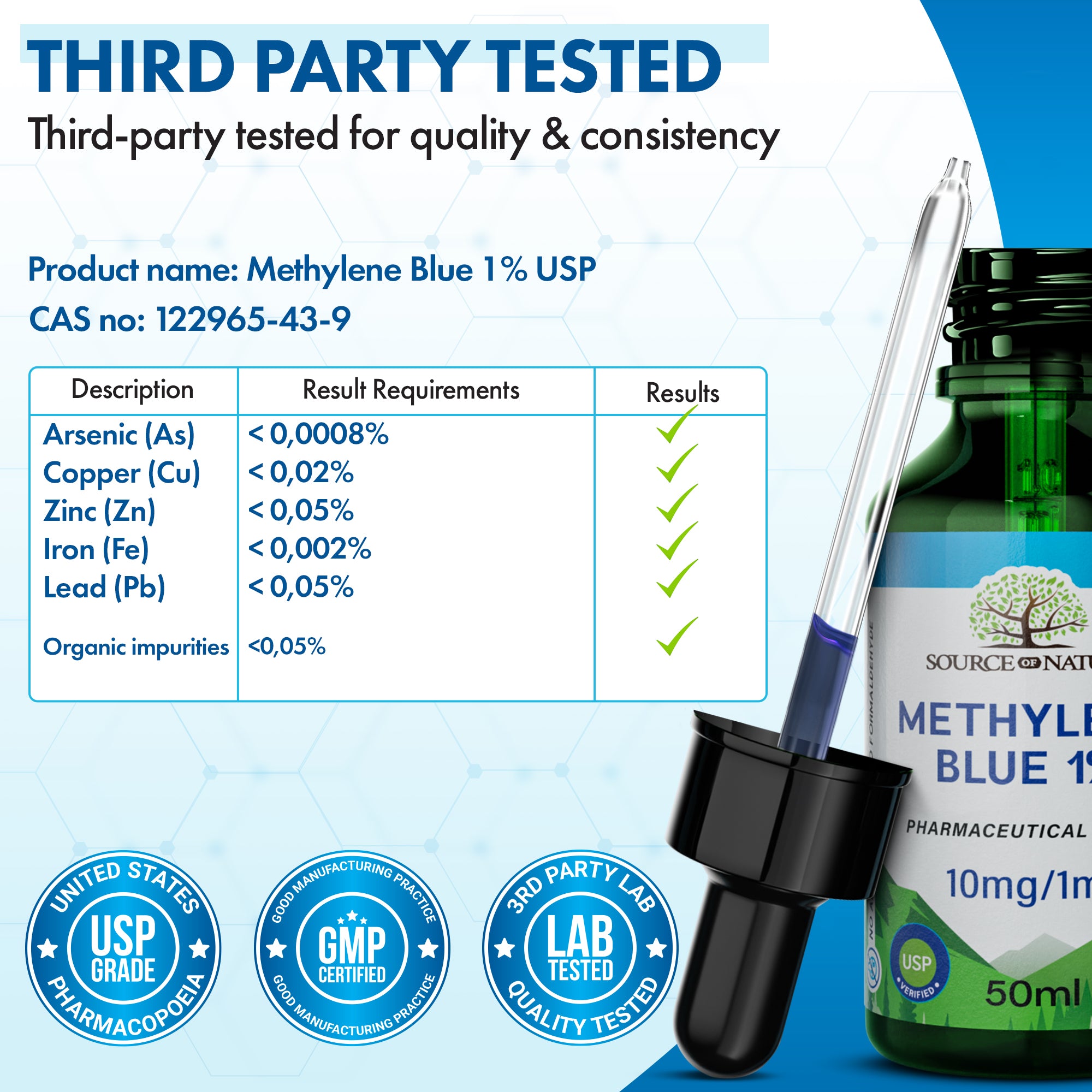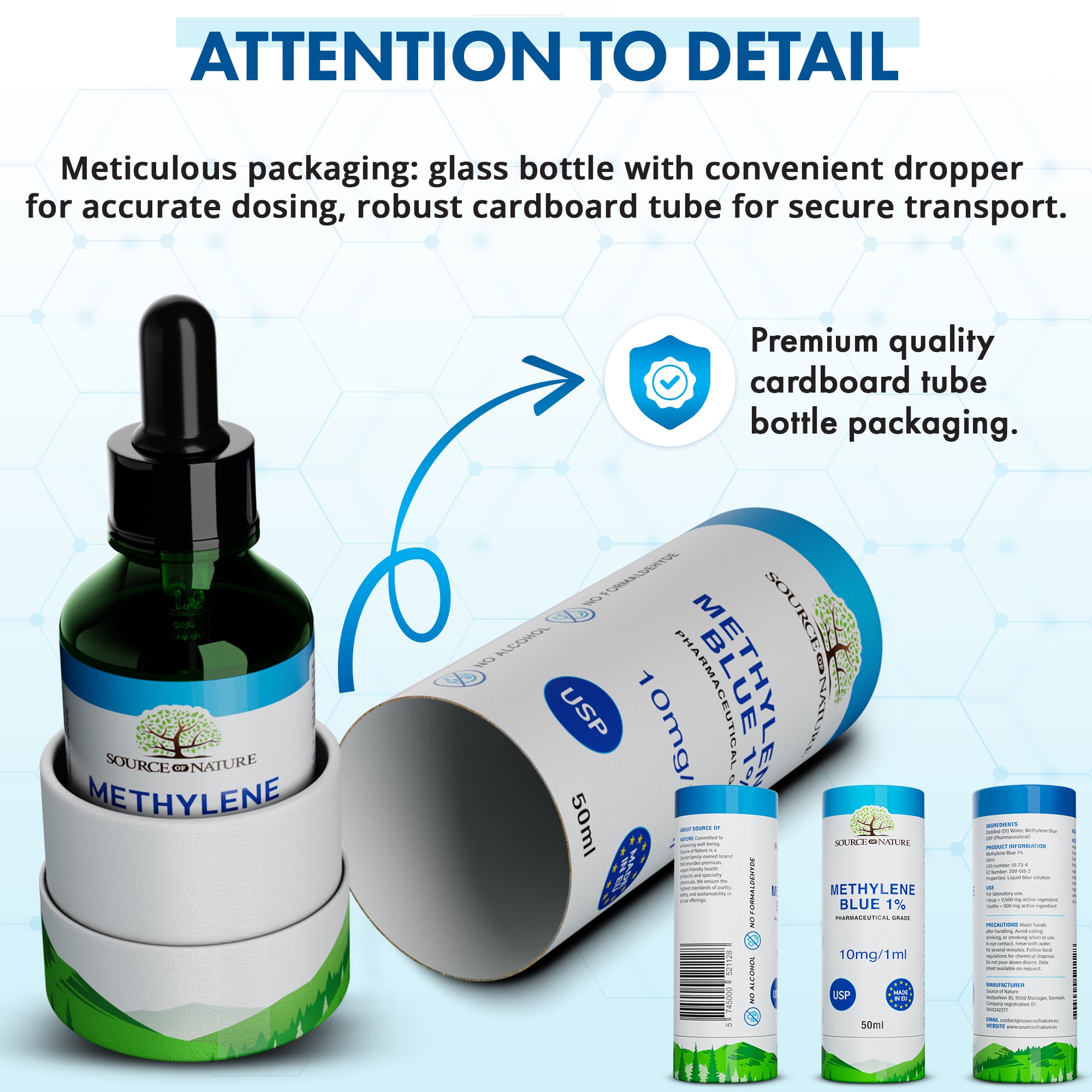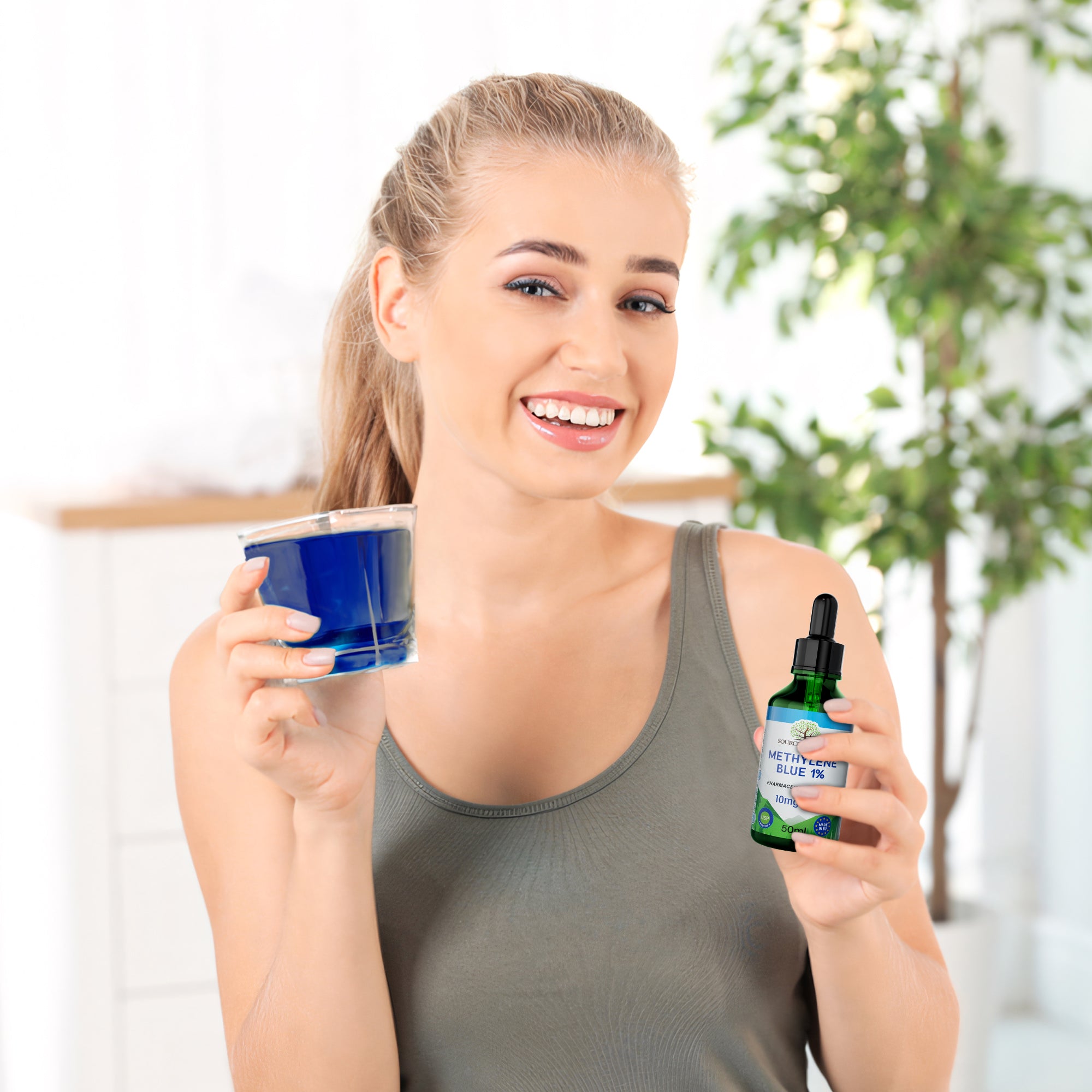Source of Nature
1% Methylene Blue | 50ml Dropper Bottle | Pharmaceutical Grade USP
1% Methylene Blue | 50ml Dropper Bottle | Pharmaceutical Grade USP
Impossibile caricare la disponibilità di ritiro
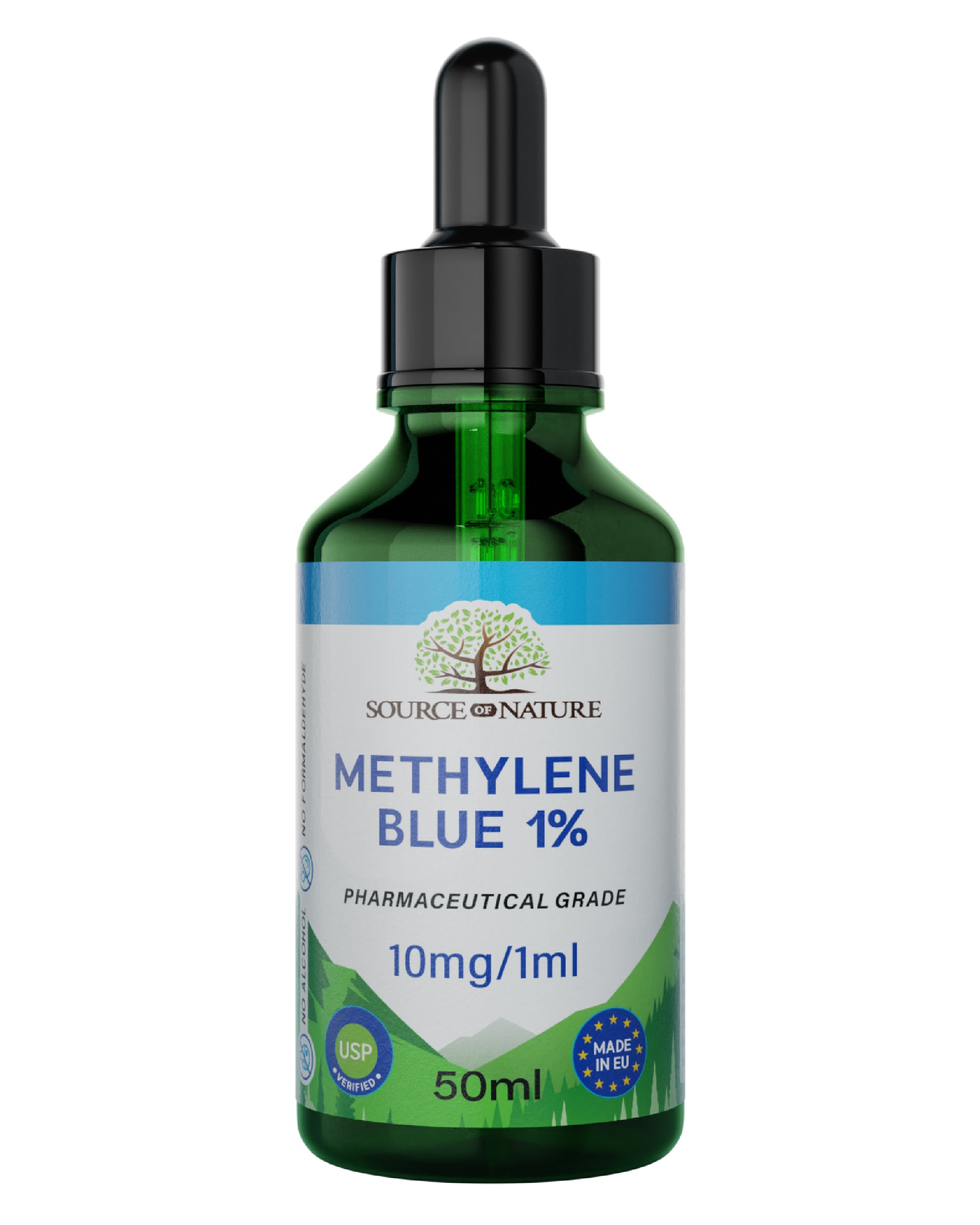






-
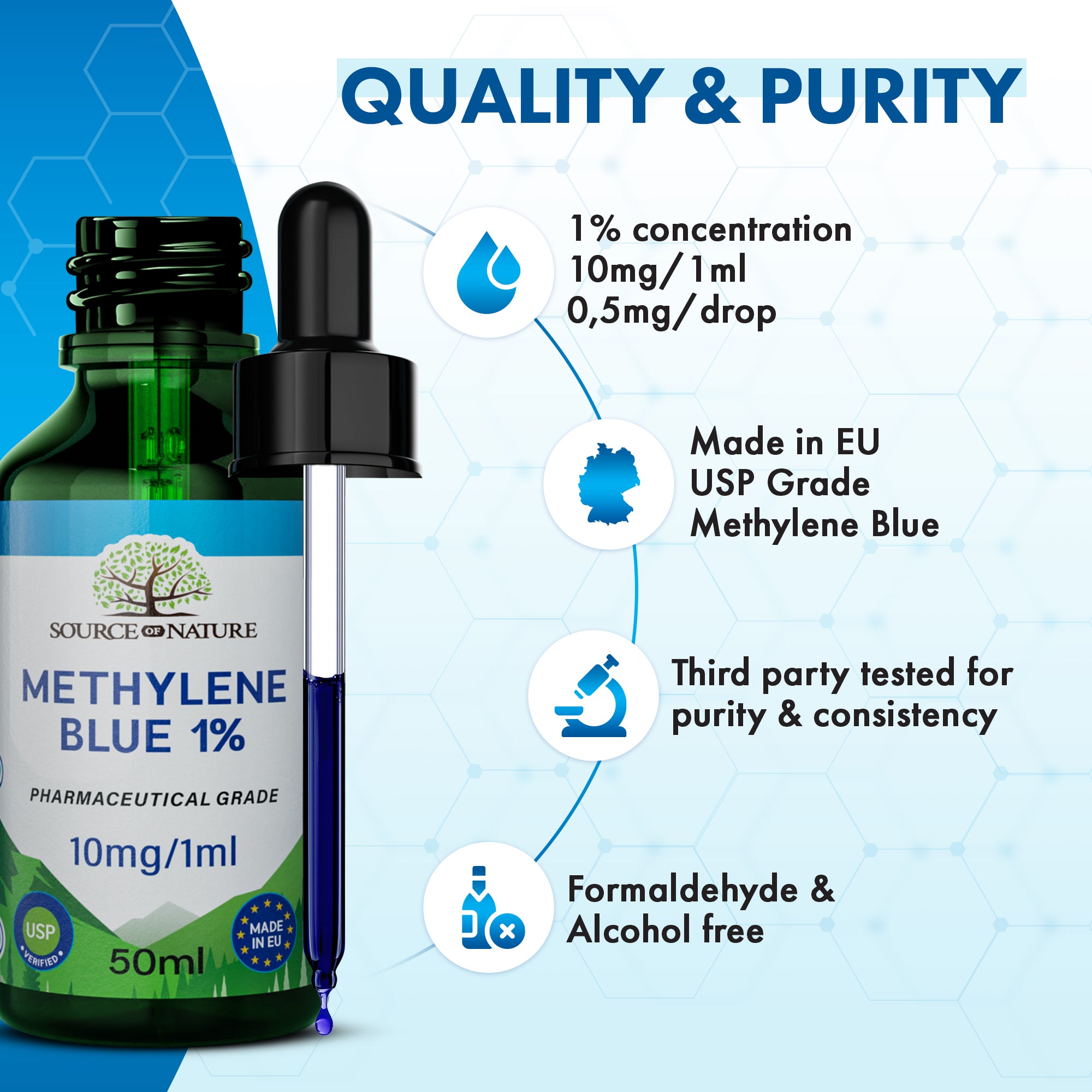
-
Fatti sul prodotto
Premium Quality: Experience the excellence of our 1% Methylene Blue solution, formulated with pharmaceutical-grade (USP) ingredients for unmatched purity. Made in Germany, each batch is third-party tested to ensure superior quality standards
Precision Dropper Bottle: Delivered in a precision dropper bottle, with approx. 500mcg methylene blue per drop for controlled application in laboratory use.
Pharmaceutical Standards: Adhering to the stringent applicable guidelines, our Methylene Blue is crafted under rigorous conditions to guarantee freedom from harmful impurities and
heavy metals.Certified Purity: Comes with the option to request a Certificate of Analysis, affirming our commitment to transparency and your assurance of receiving a product that meets the highest purity and safety standards.
Methylene Blue: A Versatile Compound
Methylene blue, chemically known as methylthioninium chloride, is a synthetic dye first synthesized in 1876 by German chemist Heinrich Caro. Originally developed for textile dyeing, it soon gained attention for its unique chemical properties, leading to widespread applications in scientific and industrial research. This vivid blue compound has been utilized in laboratory settings for staining, diagnostics, and various analytical procedures.
Historical and scientific importance
In the late 19th and early 20th centuries, methylene blue became a cornerstone in the development of chemical applications in research and industry. Its adoption in early studies of chemical processes underscored its importance in advancing modern science. While historically explored for diverse uses, methylene blue today is primarily valued for its role in non-medical laboratory and industrial applications.
Chemical Properties
Methylene blue functions as a redox-active compound, capable of accepting and donating electrons. This characteristic makes it a valuable tool in biochemical research, particularly in studies involving oxidation-reduction reactions. Its utility in staining and diagnostics highlights its continued relevance in advanced scientific techniques.
Methylene Blue disclaimer
Methylene Blue not intended for human consumption. Learn more in our safety data sheet.






Uso corretto
Methylene Blue has a long history of industrial and laboratory use. This product is not intended for human or animal consumption.

Contenuto pieghevole
Storage of Methylene Blue
Tenere fuori dalla portata dei bambini. Conservare in un luogo fresco e asciutto. Non esporre alla luce diretta del sole.
Correctly measuring Methylene Blue
Our solution offers precise dosage with about 500mcg
of high-grade methylene blue per drop.
Durata di conservazione prevista
If stored as suggested it has an expected shelf life of minimum 2 years.
Recensioni dei clienti
Package sent, havent gotten anything, this feels like a scam
Great cane quick and it i pure and works 💯
Can you check?
1% Methylene Blue | 50ml Dropper Bottle | Pharmaceutical Grade USP
Great product. I'll be back ;)


